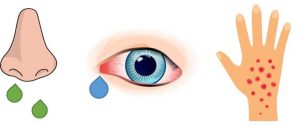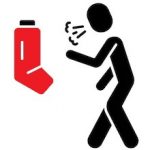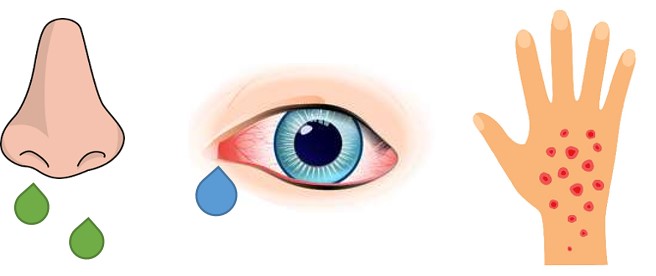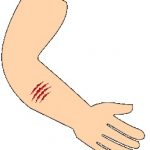This page deals with the health and safety of humans who come into contact with animals during their work or studies at Eastern. For information about the health and safety of research animals or using animals in research settings, please visit the EWU IACUC website.
All individuals working with animals must have a current tetanus vaccination (within the last 10 years).
Animal Research Hazards
Allergens, diseases, and injuries from bites or scratches are the three main hazards associated with animal research at Eastern.
Allergiens can be hazards for individuals who occasionally work in the animal facility, even if they are not involved in research, this can include facilities personnel and university police.
Other hazards may be present, depending on the project, location of work, or facility. These hazards can include:
- Bloodborne pathogen exposure – from materials derived from humans or non-human primates
- Physical injury – from contact with sharps, liquid nitrogen, UV or laser energy
- Radiation exposure
- Microbial infections – from research materials, or present in an environment for field workers
All research hazards will be explained by the research supervisor or instructor before a project begins.
If you are unclear about the hazards associated with your research project, please consult with your supervisor, instructor, or someone from Environmental Health & Safety.
Animal Allergies
The NIH estimates that 20-30 percent of people who work with animals develop allergic reactions to animal proteins and 10-20 percent will develop asthma as a result of working with animals.
Animal allergens can be found in hair, urine, saliva, and dander (shed skin cells) and are most problematic when inhaled.
Anyone who enters an animal facility can be exposed to animal allergens and have an allergic reaction.
The likelihood of developing allergic reactions is increased if someone:
- Already has allergies, especially allergies to other animals
- Spends a lot of time with the laboratory animals
- Performs tasks that increase the concentration of allergens in the air, such as moving animals or changing bedding outside a hood
Allergic reactions are usually developed in the first 12 months of contact with an animal (at home or in the workplace). It is rare for allergy symptoms to take years to develop.
Allergy Symptoms
The earliest symptoms associated with animal allergies usually consist of upper airway and skin complaints, these include:
- nasal congestion or runny nose
- sneezing
- red, watery, or irritated eyes
- skin itching
- hives

Allergy symptoms will usually begin within 15 minutes of exposure to animal allergens.
More advanced allergy cases may have lower airway complaints, such as:
- coughing
- sheezing
- shortness of breath
- asthma
- very rarely, life-threatening anaphylaxis can occur

Individuals who experience any allergy symptoms should stop working with animals, notify their supervisor or instructor, and consult EH&S or a physician. Turn in a Follow-Up Medical Questionnaire for Individuals with Animal Contact (follow this link) to the EWU Occupational Health Provider to report developing allergy symptoms.
Diseases
Animals can carry a number of diseases and contact with infected animals can cause disease in humans.
Most laboratory animals are purchased from research companies and are free of diseases, however they can be infected with diseases that can transmit to humans during research. Animals found in the wild or purchased from pet stores may carry infections.

Pre-Existing Medical Concerns
Some medical conditions can increase the likelihood or risk of infection.
- Individuals who have a medical conditions or who take medicines that reduce immune function are at a greater risk of developing zoonotic diseases.
- Pregnant women should be extra careful when working with wild animals as some of the diseases or treatments can be more dangerous for them or have the possibility of causing harm to developing fetuses.
Individuals who fall into either category should consult with a medical professional before working with animal, especially if the project will involve field work.
Pathogen Risk Groups
Laboratory animals may be infected with pathogens as part of a research study. These pathogens are categorized into four Risk Groups according to their ability to cause disease.
- Risk Group 1 (RG1) – These pathogens are not associated with disease in healthy adult humans or animals
- Risk Group 2 (RG2) – These pathogens are associated with disease which is rarely serious and for which preventative or therapeutics may be available
- Risk Group 3 (RG3) – These pathogens are associated with serious or lethal human disease for which preventative or therapeutics may be available.
- Risk Group 4 (RG4) – These pathogens are associated with lethal human disease for which preventative or therapeutics are not readily available.
At Eastern, no research is conducted with RG3 or RG4 pathogens.
Any research involving RG2 pathogens requires participation in the occupational medical monitoring program.
Zoonotic Disease Information
Zoonotic diseases are those that can be transmitted from animals to humans. These diseases frequently do not cause visible illness in animals but can make humans very sick.
All projects involving contact with wild animals must include a determination of potential disease exposure.
The Washington State Department of Health has a Zoonotic and Vector-Borne Disease Program with information about zoonotic diseases. They have pages that track current disease information for:
King County’s Zoonotic Disease Program webpage and WSU’s IACUC Zoonosis page are also great resources for disease information.
Bites & Scratches
Bites and scratches from animals can cause physical injury and allow for transmission of diseases.
If you are injured by an animal:
- Wash the site of the injury for 15 minutes, use soap and water where possible
- Obtain appropriate first-aid or medical care
- Notify your supervisor
- Fill out an incident report

For bites from wild animals, follow the above AND contact your health care provider and your local health department (Spokane Regional Health District) to determine the potential for disease exposure.



